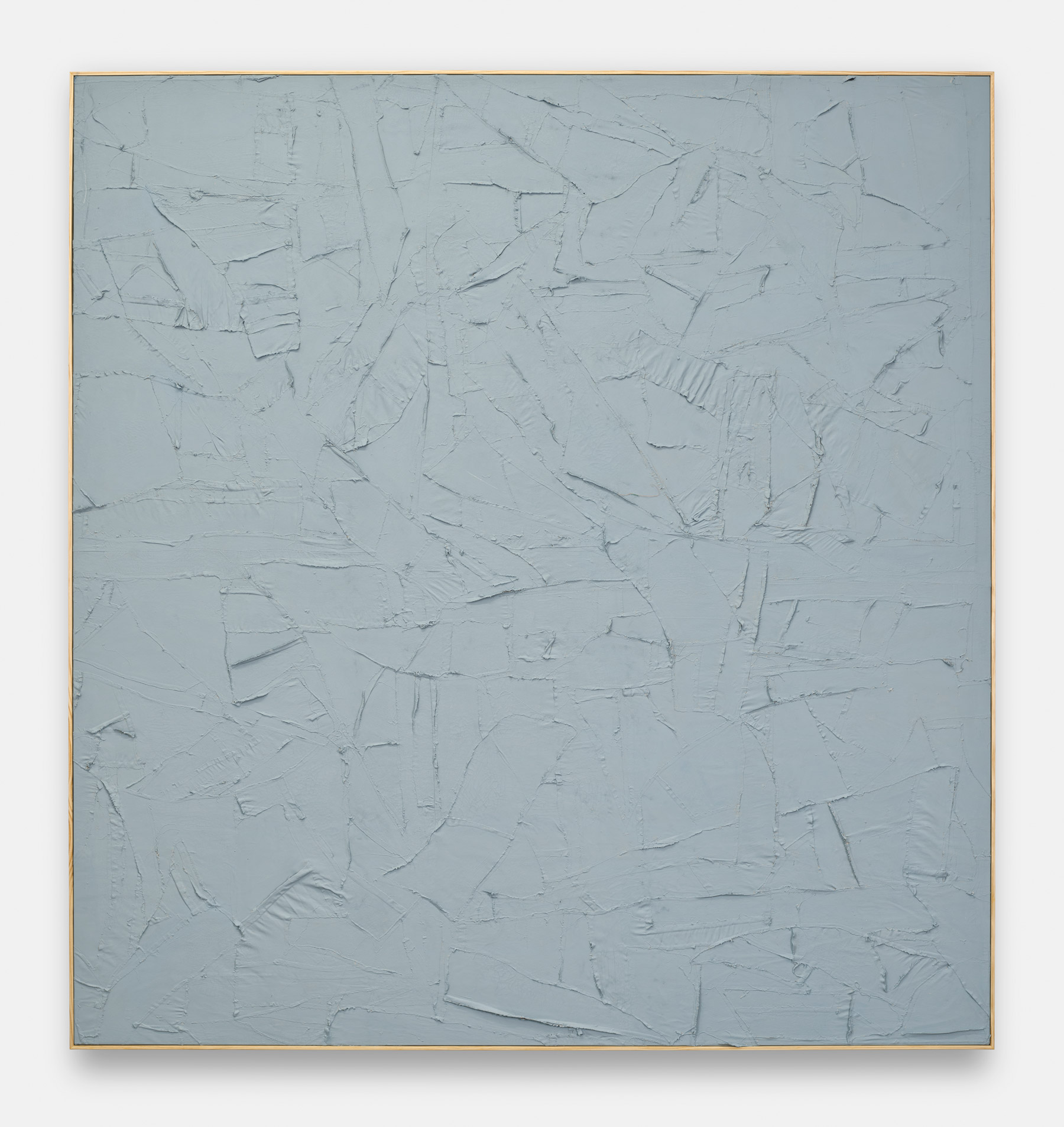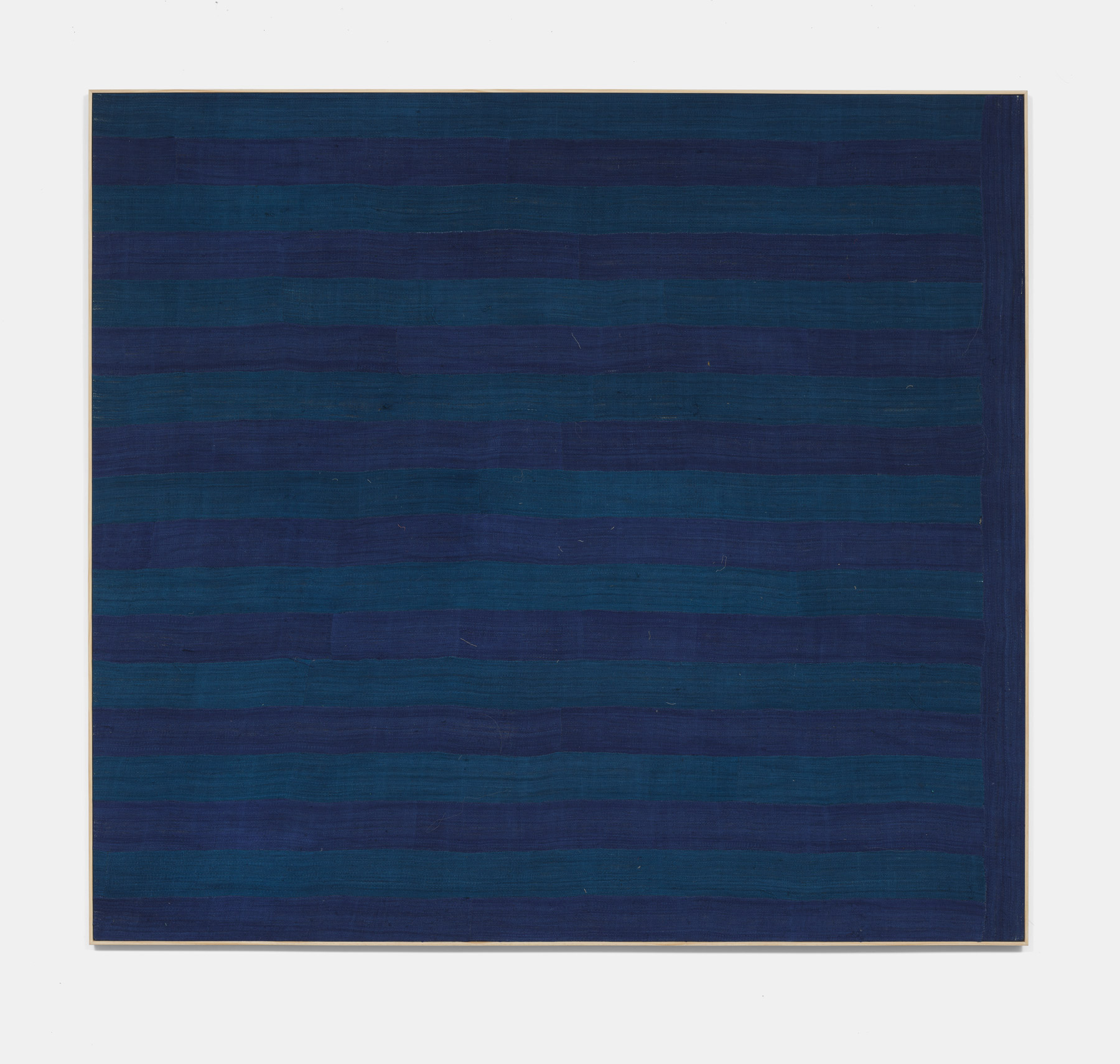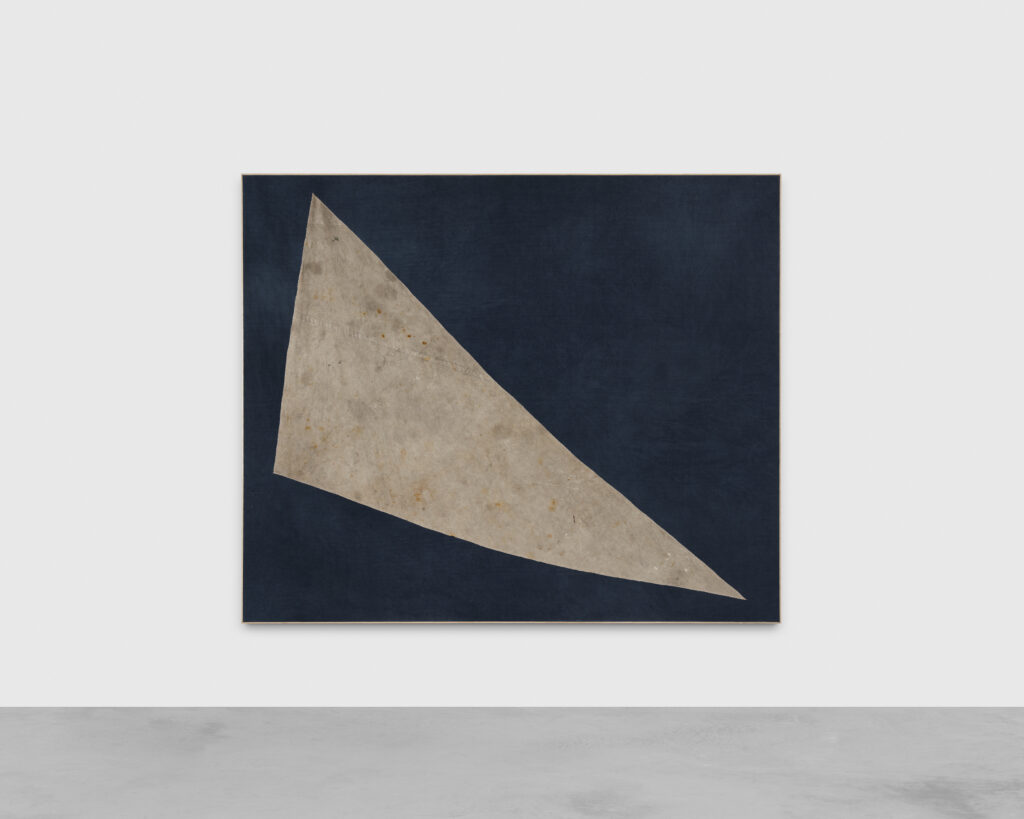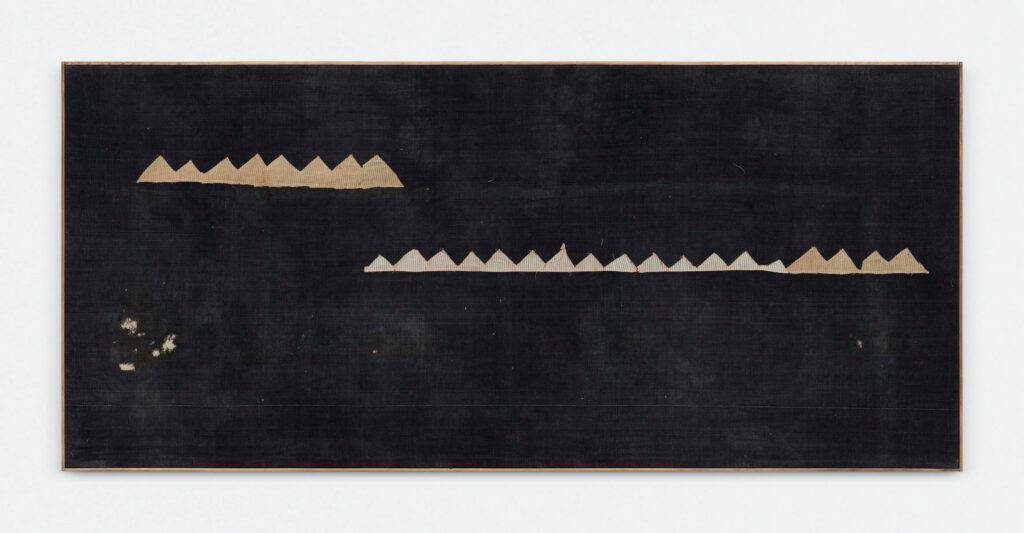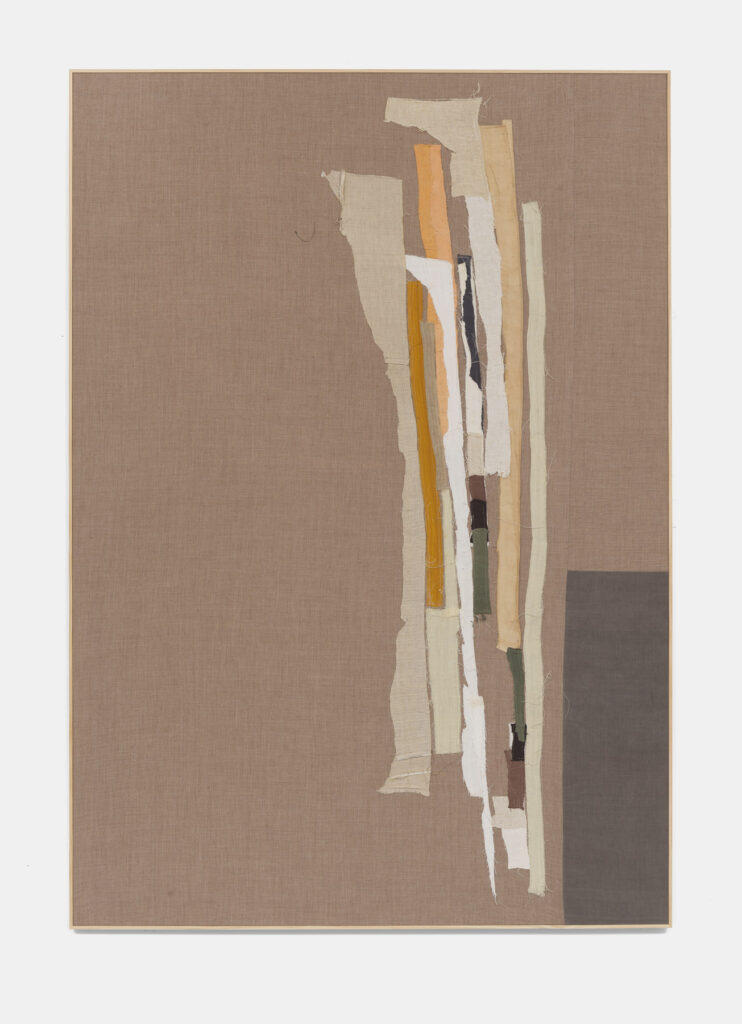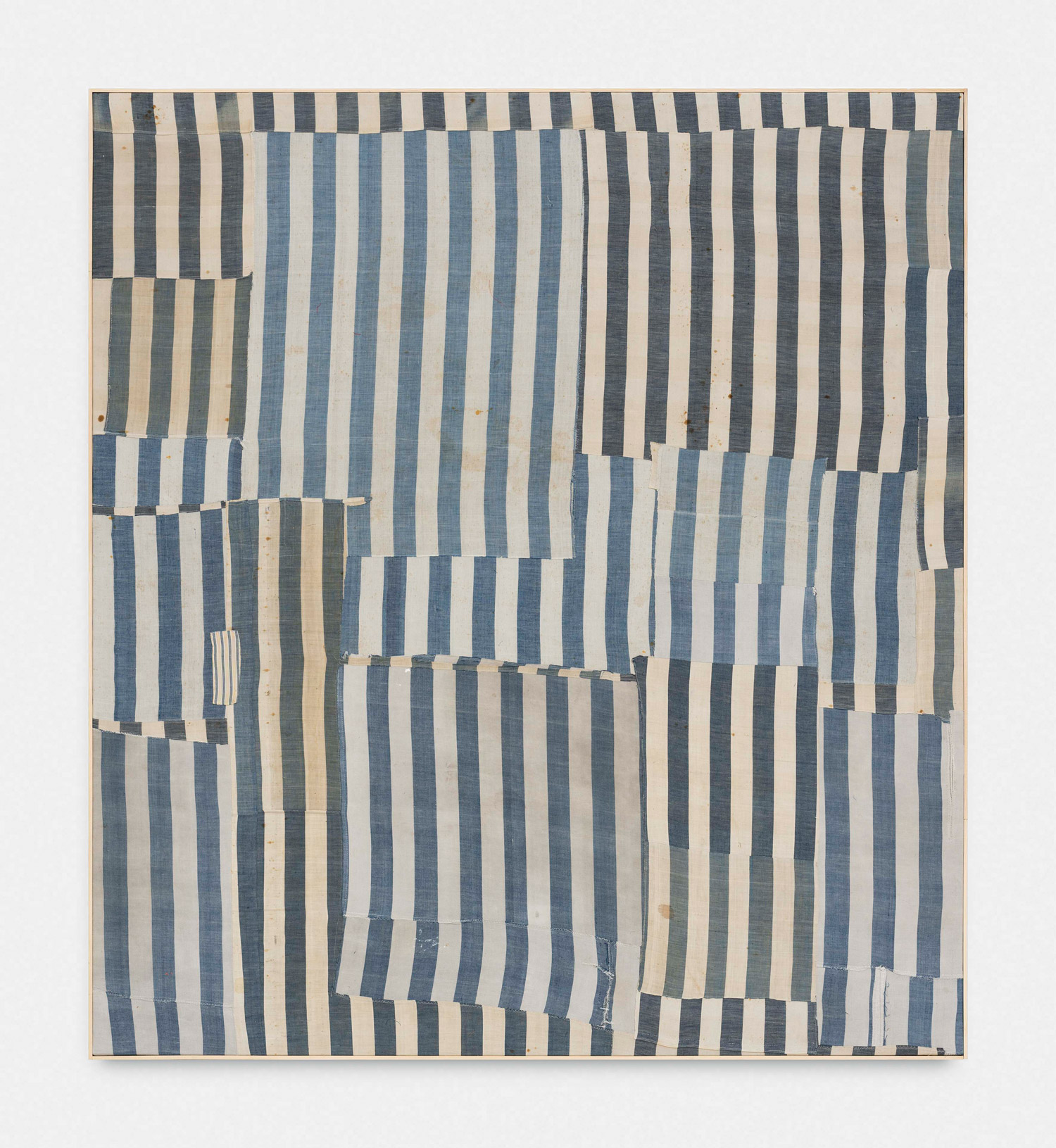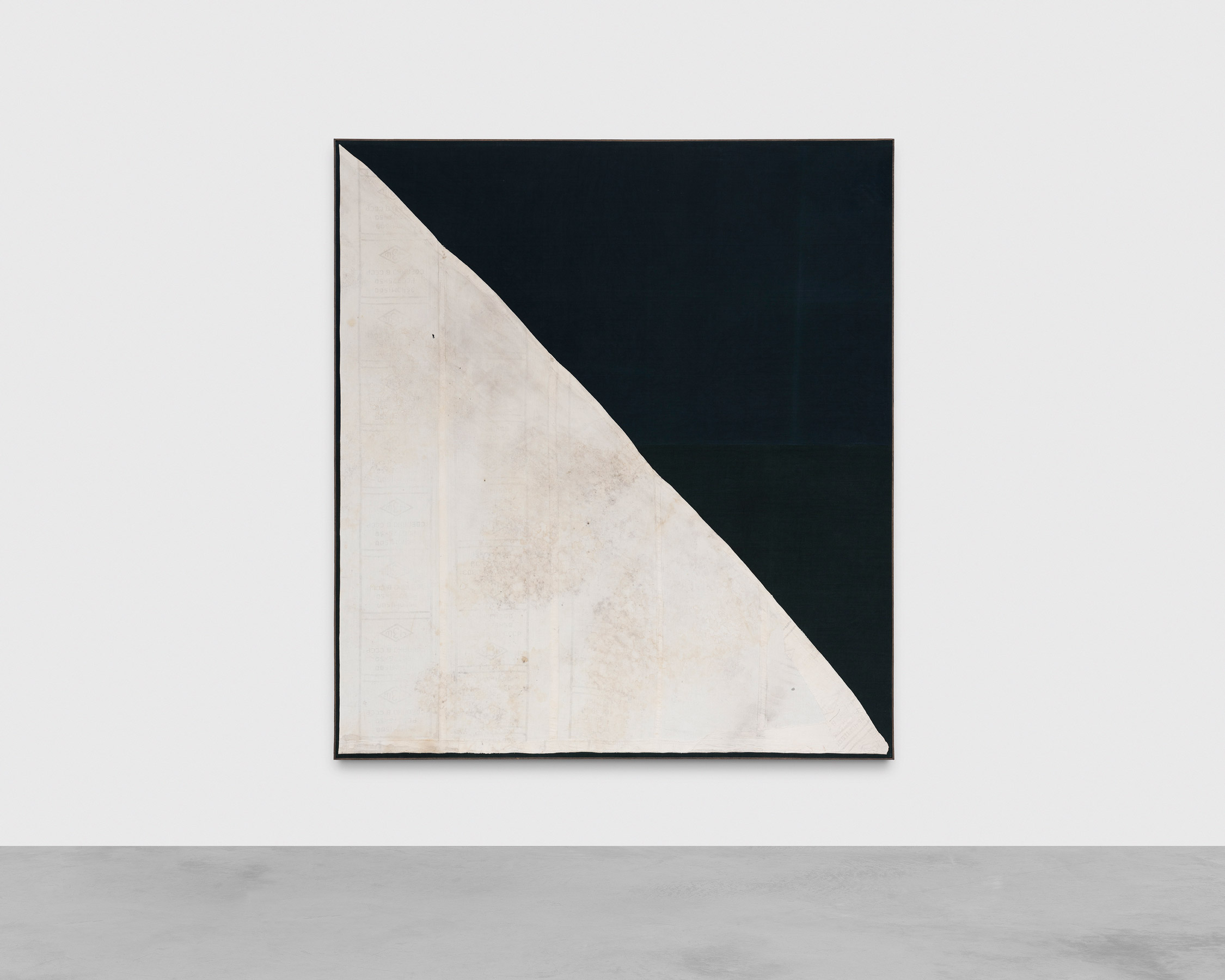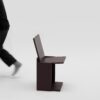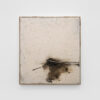In the latest edition of our interview series, we once again dive into the world of minimalist aesthetics. In inspiring conversations with creative minds from the fields of architecture, design, and art, we explore how they are guided by their vision and how they express it in their works. Along the way, they provide us with interesting insights into their creative process and reveal how they perceive and shape the world. This time, I had the pleasure of having an inspiring conversation with Lawrence Calver.
Calver (b. 1992) is a British artist whose work is characterized by the versatile use of recycled, reused and historical fabrics. Through techniques such as sewing, bleaching, stretching, and dyeing, Calver transforms the nature of these materials, giving them a new purpose. His works range from dynamic, colorful geometric compositions to minimalist, monochrome pieces, inviting the viewer to trace the temporal and geographical history of the materials.
In this interview, I spoke with Lawrence about his journey from fashion to art, his artistic practice, and the importance of the narrative component of his works. We took a deep dive into his creative process, shedding light on his method of material sourcing and discussing how he finds the balance between intention and chance.
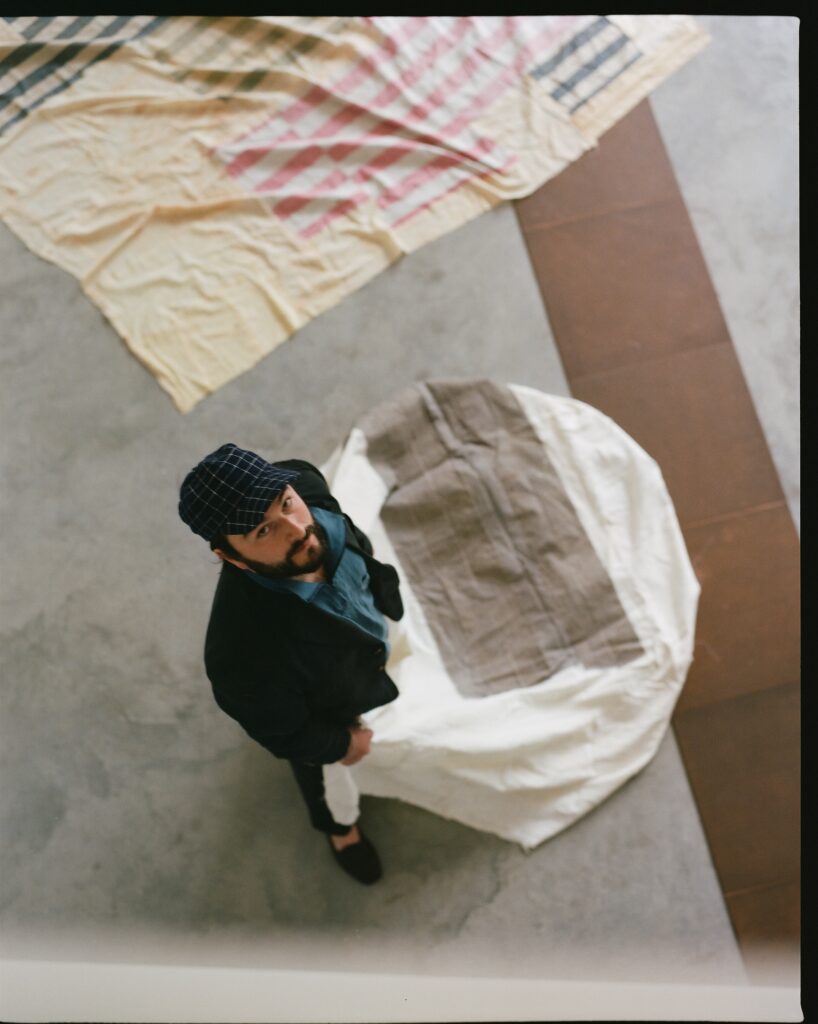
Lawrence, thank you for taking the time to talk to me about your art. You originally studied creative direction of fashion – please tell us how you came from fashion to art.
Hey, thank you for the invitation. Yes that’s correct, I studied creative direction for fashion which was a very theory-based degree. Concepts would be imagined and projects got planned, but nothing was developed into something physical as it would within the industry. I don’t feel like I come from a fashion background so specifically I as took the course very literally as ‘creative-directing’. Fashion and art can be so closely connected sometimes and so it was never really my intention to go down the route of working in the fashion industry.
Within my working practice there is the making process which resembles that most of collage. Taking various materials that may or may not necessarily relate to one another, and combining them into one entity. Meanwhile, I am very conscious of composition, color, forms, surface, which fits more comfortably into the category of painting. Whatever process the materials take me, I like to conform to the traditions of painting.
How much of your knowledge and experience from that time still flows into your art today?
Yes, this knowledge is key to making the works that I am making today. As I did not start physically making any artwork for a while after I graduated, I had already developed the ability to start a work without physically starting the work. I am more interested in the ideas going into new work than I am developing technical skills, coming up with and figuring out concepts of how to execute each work is enough in itself for the work to develop quite dramatically.
I am also very disinterested in perfecting any specific style or to be known for doing a particular type of work, instead I am focused on the approach I have to making which takes into consideration exactly what I am working with at that given moment. I feel more comfortable thinking of my role as director rather creator, as I intentionally like to keep my hand out of the work. I avoid any stylist gestures and prefer the material to be the focus of attention, practicing how to react to the material rather than to act over the material.
Your works invite the viewer on a journey to discover the history of the material. How important is this narrative component and what role does it play in your artistic vision?
I would say that the history of the material is very important to me as I use this as my starting point. I take huge interest in the age of a material, where it is from, who would have produced it, how it would be produced. It is the inspiration for setting potential outcomes in my own work.
When I have an outcome, I am less concerned with there being any strong narrative, I think that through my intentions there will be a narrative however passive it may appear. The viewer can confront each individual outcome with their own ideas and emotions so that they are free to build their own narrative.
Please tell us a bit about your creative process – how do you begin a new work, and how do you decide which materials to use?
I pickup new material often, so I have a wide selection to choose from. Sometimes a work is made solely from one piece of material, but more often than not it will be a culmination of various things combined. I never throw anything away so as material gets used, offcuts get stored into a separate place and at some stage it will have another use.
I may even base an artwork around the idea of just using the leftover pieces, its small concepts like this that quickly build up into something more valid. I work directly on the floor and don’t decide on the scale before I start, I wait until the artwork is finished before measuring the final dimensions.
Generally, I lay down some materials down on the ground and look for small details that are working, color combinations, textures, compositions, maybe a line or stain. When I find something, then I start to pull out the components that don’t work, at least at that moment. I just begin with one combination that is working and grow out from there, making as I go in order to move onto making the next decision.
I feel more comfortable thinking of my role as director rather creator, as I intentionally like to keep my hand out of the work.
How much time do you invest in the search and discovery of the right materials for a particular work?
A lot of time goes into searching for materials, but not so much for a particular work. Sourcing materials is the first stage of my practice and everything is built up from there. I would consider the process of sourcing to be a skill as it’s something that I am getting better at as time goes on and has a huge impact on the overall quality of the work.
Going back to the beginning of the interview, this is a skill that would be expected of a director. It’s also the most exciting part of my practice because it’s not a technical skill that I must learn but more a choice of lifestyle, which feels more genuine. I am able to live with curiosity, picking up ideas and material as I go without any pressure of doing one thing. I enjoy the physical engagement of searching, the places it takes me and the relationships I make along the way.
You once mentioned that you let yourself be “guided by the balance between intention and serendipity in the visual performance of each outcome”. How do you find this balance in your creative process?
Most of my early works that were successful came from the drawn out process of trial and error, and had a certain level of accident and spontaneity involved. They still do, but it’s important to be tentative to these accidents and how they have happened so that in time you develop the ability to put yourself in such a position again. For that reason, I must focus more on the process rather than the outcome to get myself into this position. It feels like a balance of intention ’setting myself up’ and serendipity ‘letting myself go’ without becoming obsessive over any specific outcome.
When you reach a junction you can go left or you can go right, and depending on which way you choose determines the destination. My practice feels similar to this, it is a journey of improvisation until I reach that junction where I must make some intuitive decisions to determine the overall outcome of the work.
Sourcing materials is the first stage of my practice and everything is built up from there.
Many of your works are very reduced and minimalist. However, many artists reject the term “minimalist” as a description of their own works. How do you feel about the term?
I quite like the term because the works of mine that may be considered “minimalist” usually start out very busy and chaotic, just because of the decisions that I have made in the making process. When I reach a point where I don’t know where else to go in the work then I start to simplify, pull out all of the color or overdye the material completely, sometimes in more recent work I paint over the whole work. By doing this I have taken away the over complicated aspects of the work and reset to something more manageable.
Sometimes from there it may take the work in a completely different direction, and sometimes it’s what completes the piece. This is what I consider to be my most prominent minimalist work, but there are times that the chaos works out well too. There is a very small margin that separates those outcomes from each other.
And finally: What are you working on right now and what are your plans for the future?
Right now, I am still working a lot around the nautical theme, I had a solo show in June at De Brock gallery in Belgium that showed a series of large scale ‘sail paintings’. I am still working around this concept but focusing even more specifically on the material to create a narrative rather than the slightly more suggestive ‘sail paintings’ with their strong silhouettes. I am currently working on a series using the materials in their most raw form, doing nothing technical, just needle and thread.
When I travel I also take a lot of photographs, not so much to document what I am doing but more of objects. It allows me to extract small details of inspiration that can often find its way into the work subconsciously. It’s nice to share these smaller details that help to make up the bigger picture. So I feel maybe in the future this will become more relevant too in some form.
Thank you so much, Lawrence!
https://www.instagram.com/law_calver/
https://www.debrockgallery.com/artists/lawrence-calver
https://www.simchowitz.com/artists/lawrence-calver
Aesence Feature: Lawrence Calver — Shaped By Serendipity And Time
